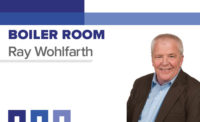There is an old saying: a watched pot never boils. A better metaphor for patience is to guess the time it takes for a two-pipe hydronic system to changeover from heating to cooling. A design engineer asked to meet at a school building in what he described as “a challenging project.” I love challenges.
When I arrived, I saw the building had an old cast iron sectional boiler in dire need of retirement. There were several leaking sections. As usual, money was tight on this project. The system was a two-pipe system. During the heating season, heated water flowed through the piping. The water temperature was reset between 180° F and 140° F, according to the outside air temperature. In the cooling season, chilled water was pumped through the pipes.
The engineer said the owner wanted two outcomes for this project: lower fuel costs and a quicker changeover between heating and cooling. If you have worked on two-pipe systems, you know they are a headache during the shoulder times of the year. The building may need heat in the morning and cooling in the afternoon. A two-pipe system does not quickly changeover from heating to cooling. This is because a non-condensing boiler's lowest temperature is 140° F. The chiller cannot operate with water temperatures above 90° F., leaving a 50° dead band. It may take several hours or even a day before the hydronic loop cools enough to perform the changeover to cooling. Then it all starts over if the building needs heat at night. In the meantime, the maintenance department is getting lots of comfort complaints.
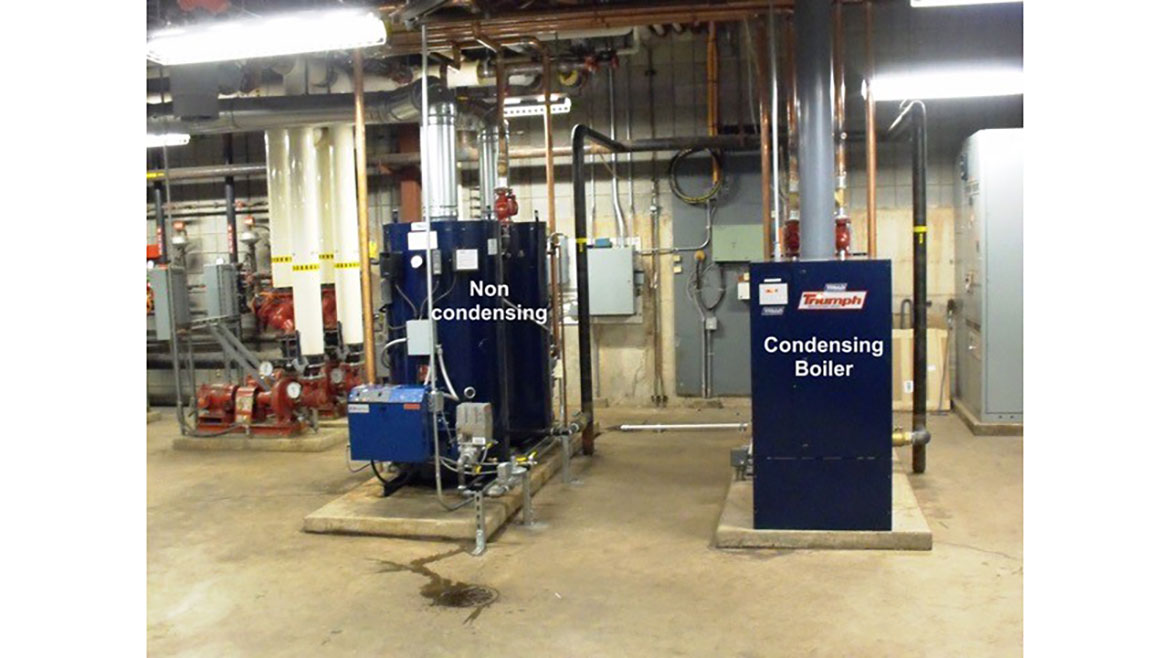
An example of a hybrid heating system.
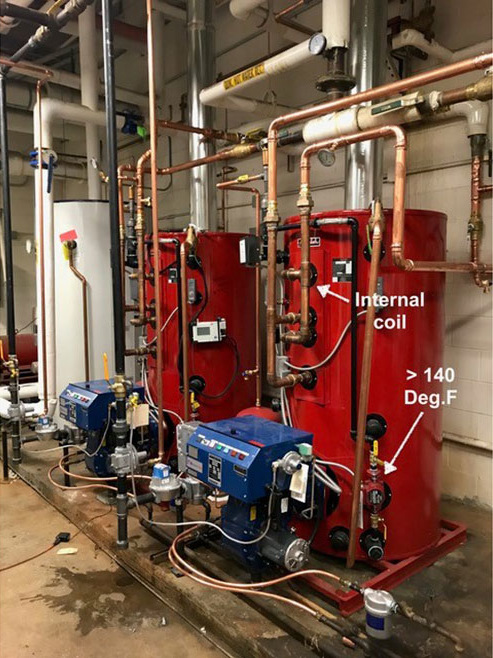
A combination boiler solution.
How do I lower the water temperature quickly to allow a faster changeover? I have seen HVAC systems that had a purge mode. The control system would open the outside air dampers on the air handling units and cool the loop using the outside air. Once the temperature dropped enough, the chiller was enabled. We couldn't do that here, as the building had old unit ventilators for the heating and cooling, and equally old pneumatic controls that barely worked. You would have to open each univent, manually open the outside air dampers and then close them when the water temperature dropped. The school tried a modified purge mode by having the teachers turn all the thermostats up but that made the classrooms even hotter and resulted in more comfort complaints. I typically recommend condensing boilers or a hybrid heating system in these applications.
The disadvantages to using all condensing boilers on this project are that they have a lower life expectancy and require more maintenance than traditional non-condensing boilers. The understaffed maintenance department didn't do preventive maintenance and just responded to emergency calls, essentially putting out fires. The designer and I feared the new condensing boilers would be ruined in a few short years.
A hybrid heating system consisting of condensing and non-condensing boilers is cost-effective. The owner has the efficiency of condensing boilers and the longer life you have with non-condensing boilers, typically 25 to 30 years. In addition, a hybrid system is less expensive to install than a condensing-only boiler system. The new non-condensing boiler can usually be vented into the existing chimney, saving money.
When using a hybrid heating system, I have the non-condensing boiler(s) as the lead and the condensing boiler(s) as the lag when the loop temperature is above 140° F. When the loop temperature is below 140° F, I switch the lead and lag boilers, enabling the condensing boiler(s) to be the lead. All of this was a moot point, as the cost to install condensing boilers was much higher than that of non-condensing ones because the boiler room was two stories below grade. As I said, money was tight. The engineer challenged me to come up with an alternate idea. So now I had to figure out what to do during that 50° dead band.
Another factor we had to consider was that the existing heating system was designed using 180° F. This meant the system required 180° water at the outdoor design temperature. When operating a condensing boiler at this temperature, the condensing boiler doesn’t condense and has efficiencies slightly higher than a non-condensing boiler. See the enclosed bar chart in Figure 1 which shows the dewpoint temperature at various burner oxygen levels.
FIGURE 1

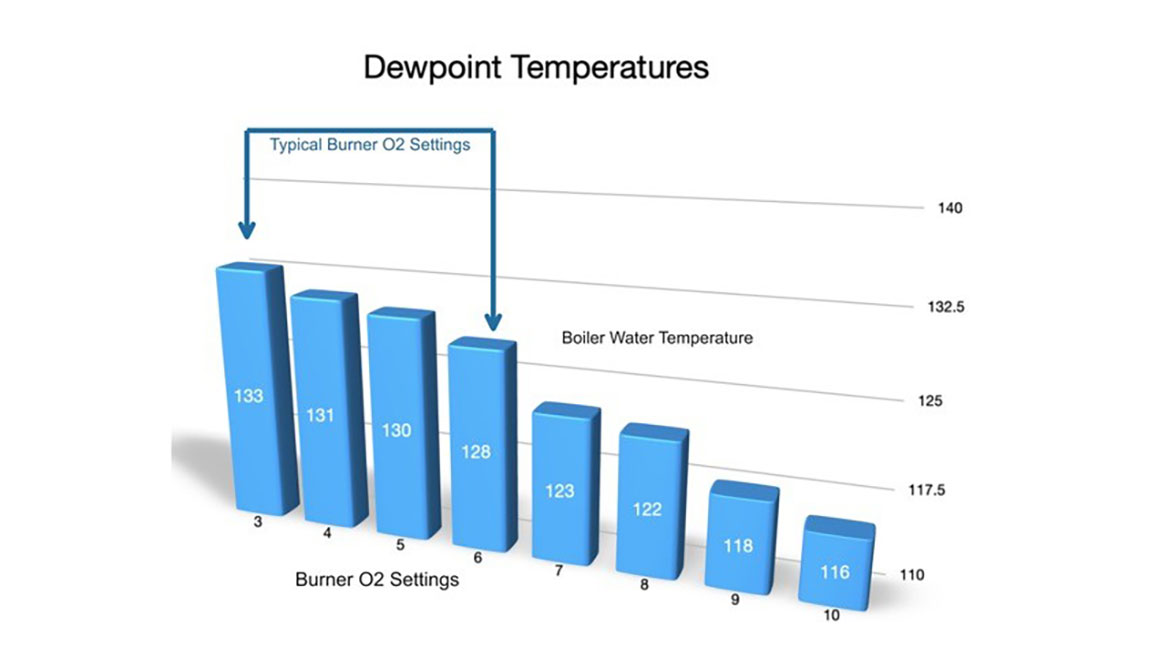
Suddenly, the solution came to me.
We could use a combination boiler. The combination boiler has an internal copper coil, allowing you to heat a completely different loop. The loop attached to the coil is traditionally used for low-temperature applications such as snow-melt systems, swimming pools or domestic hot water. If it could handle these applications, it could handle the dead band temperatures between 90- and 140° F.
FIGURE 2

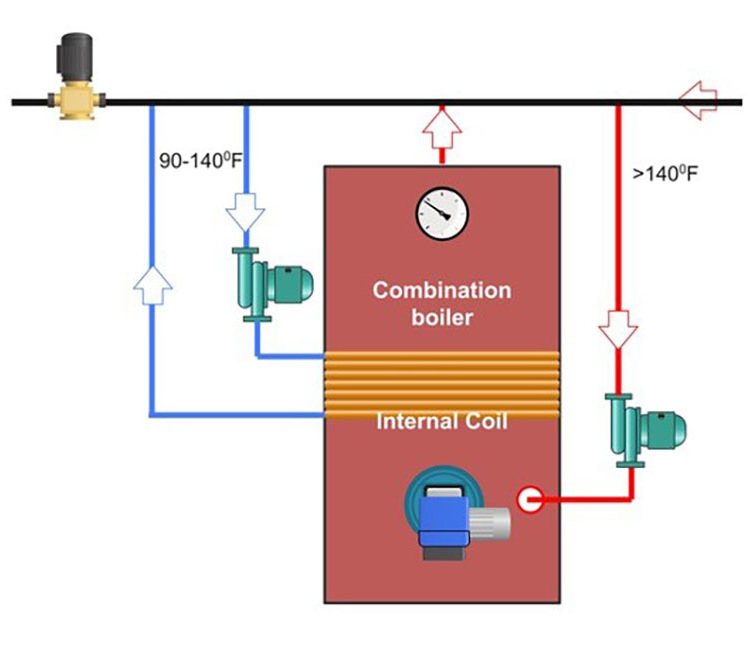
FIGURE 3

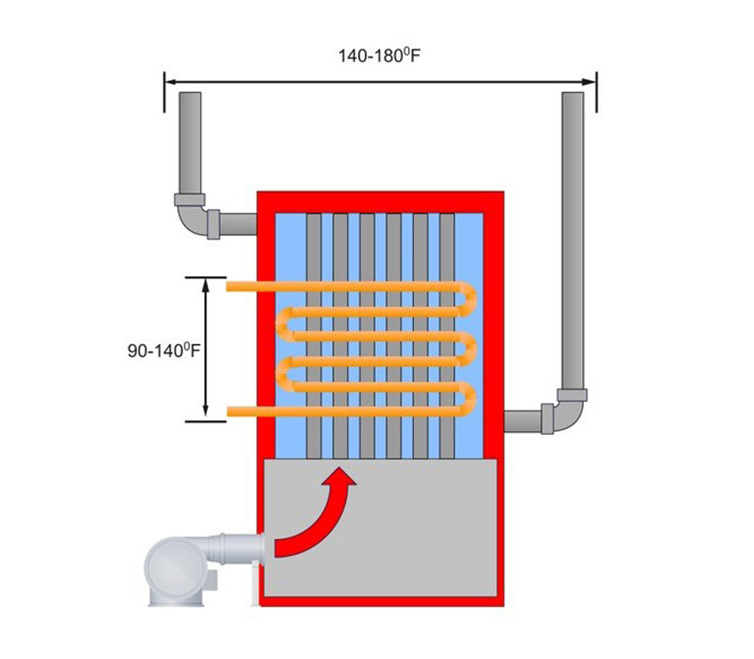
We used three boilers for the project. Two of the boilers were combination boilers with an internal copper coil. The control strategy was to have the heating water for the system go through the internal coils when the loop temperature was below 140° F. Above 140°, the heating water went through the space heating side of the boiler. We programmed the reset control from 180° to 90° F when the outside temperature went from 12° to 60°.
If you have worked on two-pipe systems, you know they are a headache during the shoulder times of the year. The building may need heat in the morning and cooling in the afternoon. A two-pipe system does not quickly changeover from heating to cooling.
Twelve degrees is the outdoor design temperature for Charleston, West Virginia. At an outside air temperature of 12° F, the supply water temperature was 180° F. As the outdoor air temperature rose, the supply water temperature dropped. At 60° outside air temperature, the supply water temperature was 90°. The chiller could operate at 90°. We reset the supply water rather than the return water temperature to 90° F because we thought the temperature difference between the supply and return would be much lower than the usual 20° drop. After all, the building didn't need much heat at those temperatures. This project worked perfectly, and the owner got a more efficient heating system and a faster changeover from heating to cooling and back, typically less than an hour.
FIGURE 4

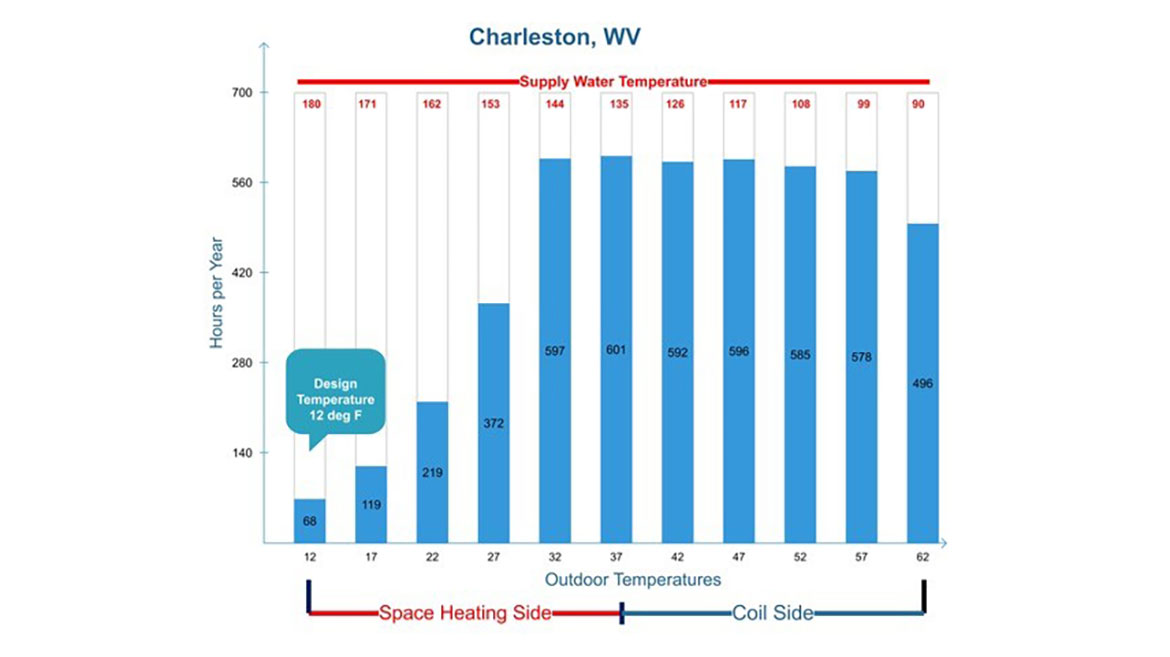
Sometimes, you must think outside the box. In case you were wondering, the state did not follow the International Energy Conservation Code which says:
C403.4.3.2 Two-pipe changeover system: Systems that use a common distribution system to supply both heated and chilled water shall be designed to allow a deadband between changeover from one mode to the other of not less than 15° F (8.3° C) outside air temperatures; be designed to and provided with controls that will allow operation in one mode for not less than 4 hours before changing over to the other mode; and be provided with controls that allow heating and cooling supply temperatures at the changeover point to be not more than 30° F (16.7°C) apart.



